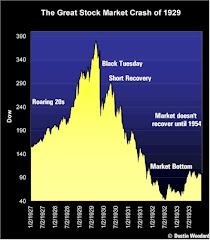 There are a few groups that are fighting for taxpayers to make sure that government stay accountable to the taxpayer.
There are a few groups that are fighting for taxpayers to make sure that government stay accountable to the taxpayer. One of the groups that I respect is the Canadian Taxpayers Federation. Occasionally they bring an interesting pension situation to my attention.
A pension they brought to my attention is the Saskatchewan Healthcare Employees Pension Plan or SHEPP. It is a a typical mid sized pension plan in Canada. Funded by taxpayers for the benefit of public sector employees.
It is the kind of plan all Canadians would like to have.
Pension Envy
A total of 65 healthcare employers in Saskatchewan participate in SHEPP on behalf of their employees.
The plan serves 43,729 members. Of these 32,287 are in active service and 10,018 are retired and the remainder have a deferred pension
Total assets in the plan at the end of 2008 were just under $2.5 Billion
Total contributions into the plan 2008 were $163 million.
Last year the employees contributed $75.514 M while the employers contributed $84.464 M or 112% of the employee contribution
There was $117 million in total benefits paid out in 2008
The plan lost 19.8% on its investment portfolio last year.
The total plan assets fell by $562 million in 2008
The employee contributions into the plan are 5.85% of earnings up to the YMPE ($46,300) and the contributions on income over YMPE are 7.53%
The employer (taxpayer) contributions are set at 112% of employee contributions or 6.55%
A total of 65 public healthcare employers mainly hospitals in Saskatchewan participate in SHEPP on behalf of their employees.
Like most of these pension plans there is no representation from the taxpayers who fund them. They have a list of trustees who are “employer” and “employee” representatives. However, even the employer representatives appear to be members of the pension plan.
When difficulties arise with these plans the funding problems are usually discussed with the government behind closed doors. The government does not like to create friction with its largest voter block. Pensions usually get what they want from the politicians negotiating with your money.
There needs to be taxpayer watchdogs on the boards of these pension plans. They are funded by taxpayers and taxpayers have to kick in any pension shortfalls.
The average wage in the health care sector in Saskatchewan is $46,742 per year. The average pension from SHEPP is based on a 2% per year with maximum pension at 35 years. This means a benefit of close to 70% of retiring income or $32,719 including CPP.
Of this pension of $32,719 the CPP would contribute $10,905 and the pension plan contributes about $ 21,814.
The big question is …
An private sector employee pays 4.95% of annual income into the CPP plan to get $10,905 per year in pension income.
The public sector employee in SHEPP pays 5.58% to get $21,814. How can the public sector employee pay in the same and receive twice as much in taxpayer funded pension?
Canada is addressing pension reform at all levels of government. Fairness between the public sector and public sector pensions is one the key issues that needs to be addressed.



Great work as always, Bill.
ReplyDeleteWhat are you talking about? CPP and SHEPP are two different plans. SHEPP is a negotiated part of public sector employees' compensation under the terms of their employment. Many private sector workers have similar pension agreements.
ReplyDeleteTaxpayers don't fund the employer's portion, the employer does.
A situation in which taxpayers DO directly fund a sector of the economy is agriculture. Where a pulic sector worker is compensated in return for the work that they do, a farmer is compensated because he is a farmer, a private business operator who DOES NOT work for anything in any way related to the taxpayer. The cost to the SK taxpayer THIS year is over $650 million!!! thus far.
erhaps you and the CTF phonies should get your priorities straight.
So, Bill, the real question is, WTF are you on about? A wage earner, public or private sector, pays in 4.95% to CPP, for a maximum of $10,905.00 per annum in pension income.
ReplyDeleteThose with an additional pension through their employer, public or private, recieve whatever their plan dictates. What is your problem with that? Class envy?